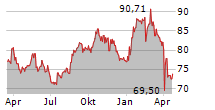Medtronic is using artificial intelligence to design more accurate technology for all from the early days of innovation
NORTHAMPTON, MA / ACCESS Newswire / August 26, 2025 / When Keith Holloman saw how COVID-19 affected his own family, the importance of accurate healthcare technology became deeply personal.
"It's not just this ambiguous patient out there," said Holloman, a clinical research program manager at Medtronic. "It's someone I care for that could benefit from our technologies."
Holloman now works in Acute Care & Monitoring developing pulse oximeters - devices he used regularly when he worked as a respiratory therapist.
Pulse oximeters measure oxygen in the blood. They became even more critical for decision-making during the pandemic, and that surge in use spotlighted a troubling flaw: studies showed the devices can be less accurate on patients with darker skin tones.
Holloman is part of efforts to change that by using artificial intelligence to design technology for all from the start.
"We're making sure that our technology is equitable for every patient we serve," Holloman said.
Powered by AI
Doctors have relied on pulse oximeters for more than 40 years to monitor patients' oxygen levels and knowing oxygen levels helps clinicians detect when a patient's health is declining.
"They're dependent on having an accurate measurement which potentially could result in them making decisions in terms of what level of intervention is necessary for that patient," Holloman said of doctors.
At Medtronic, the NellcorTM pulse oximeter has been using artificial intelligence for more than 20 of those years - a move that positioned the company as an early adopter of AI to enhance device accuracy, said Jason Case, who leads research and development in the Acute Care & Monitoring business.
How does AI work in these small devices? First, consider how pulse oximetry works, he said.
"We're shining light, through tissue, to measure oxygen in the blood," Case said, "You can think of this like shining a flashlight into fog to look for something. And because blood moves with every heartbeat, the pulse lets us know when to take a measurement. Our AI is really good at identifying each and every pulse, and that enhances our accuracy."
Every pulse is an opportunity to accurately measure oxygen supply, and AI in NellcorTM sees every single one - helping clinicians ensure patient safety moment-to-moment.
Still, said Case, there's more work to be done.
The human touch
Long before pulse oximeters get clipped to a patient's finger in the hospital, Medtronic scientists and engineers are innovating AI algorithms with the help of regular people, Holloman said.
The company opened a clinical physiology lab near the Five Points neighborhood of Denver, Colorado, to conduct its clinical trials not only with a wide array of participants but with more speed and frequency, leading to faster innovation.
"We're looking at ways to improve our algorithms to accurately account for the variations in skin pigmentation, and we're going a step further to actually design clinical studies that will give us the data that shows our algorithms, our new technology, is indeed accurate," Holloman said.
The lab in Denver empowers Medtronic to not only examine current device performance but to inform new designs. This work includes thinking through how AI can help predict and prevent complications - perhaps even before a doctor knows something's wrong, Case said.
"Imagine if we could use AI to look at small variations in the pulse to see an infection early and then do something about it," he said.
The technology under development has been accepted into the U.S. Food and Drug Administration's Safer Technologies Program for Medical Devices (STeP) - a designation that accelerates the development, assessment, and review of devices that are expected to improve the safety of current treatments.
"This means a ton for our patients," Case said.
Learn more about Medtronic here.
Patient monitoring products should not be used as the sole basis for diagnosis or therapy and are intended only as an adjunct in patient assessment. Note: Oxygen saturation accuracy can be affected by certain environmental, equipment, and patient physiologic conditions (as discussed in the operator's manual for the monitor) that influence readings of SpO2. Please consult the IFU and operator's manual for full safety information. Some of the technologies discussed in this article are aspirational, pipeline projects and not cleared or available for sale at this time.

Medtronic opened a physiology lab in Denver, Colorado to examine current device performance and inform future designs.
View additional multimedia and more ESG storytelling from Medtronic on 3blmedia.com.
Contact Info:
Spokesperson: Medtronic
Website: https://www.3blmedia.com/profiles/medtronic
Email: info@3blmedia.com
SOURCE: Medtronic
View the original press release on ACCESS Newswire:
https://www.accessnewswire.com/newsroom/en/industrial-and-manufacturing/shining-light-through-the-fog-how-ai-makes-every-pulse-count-1065431



